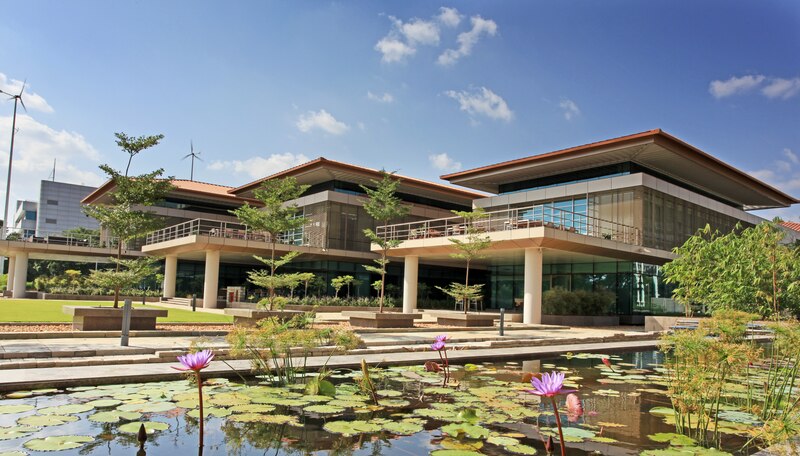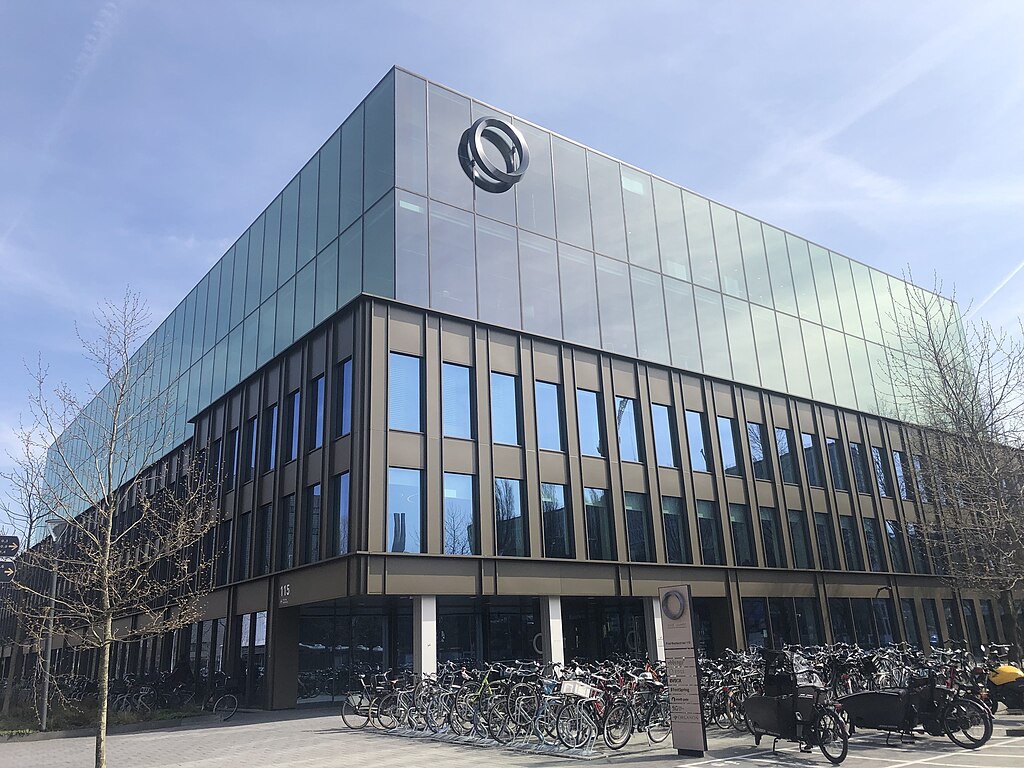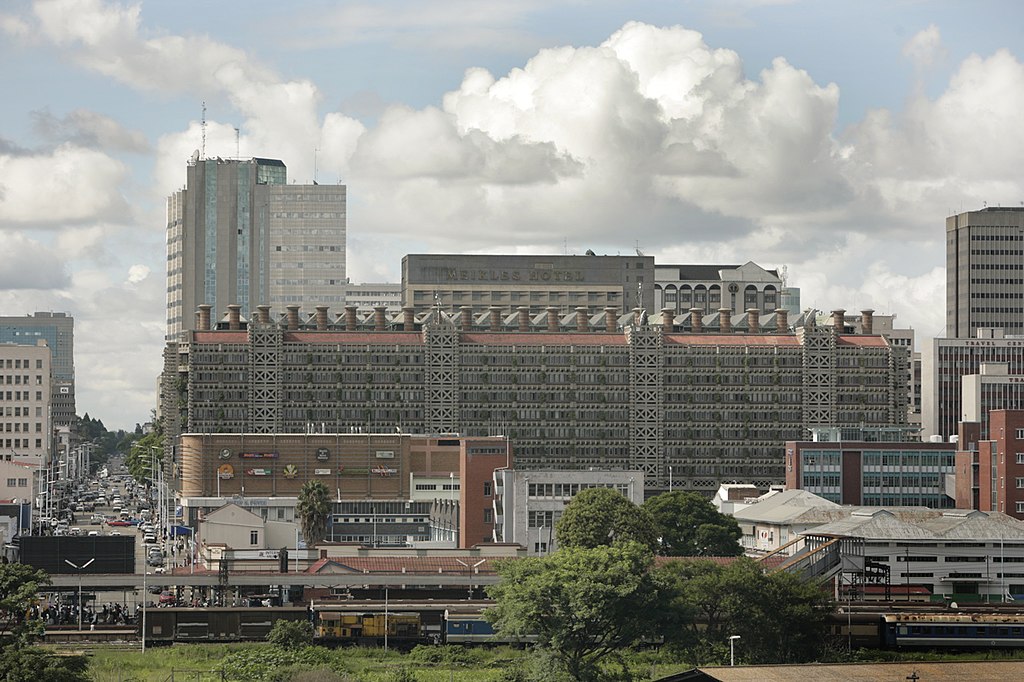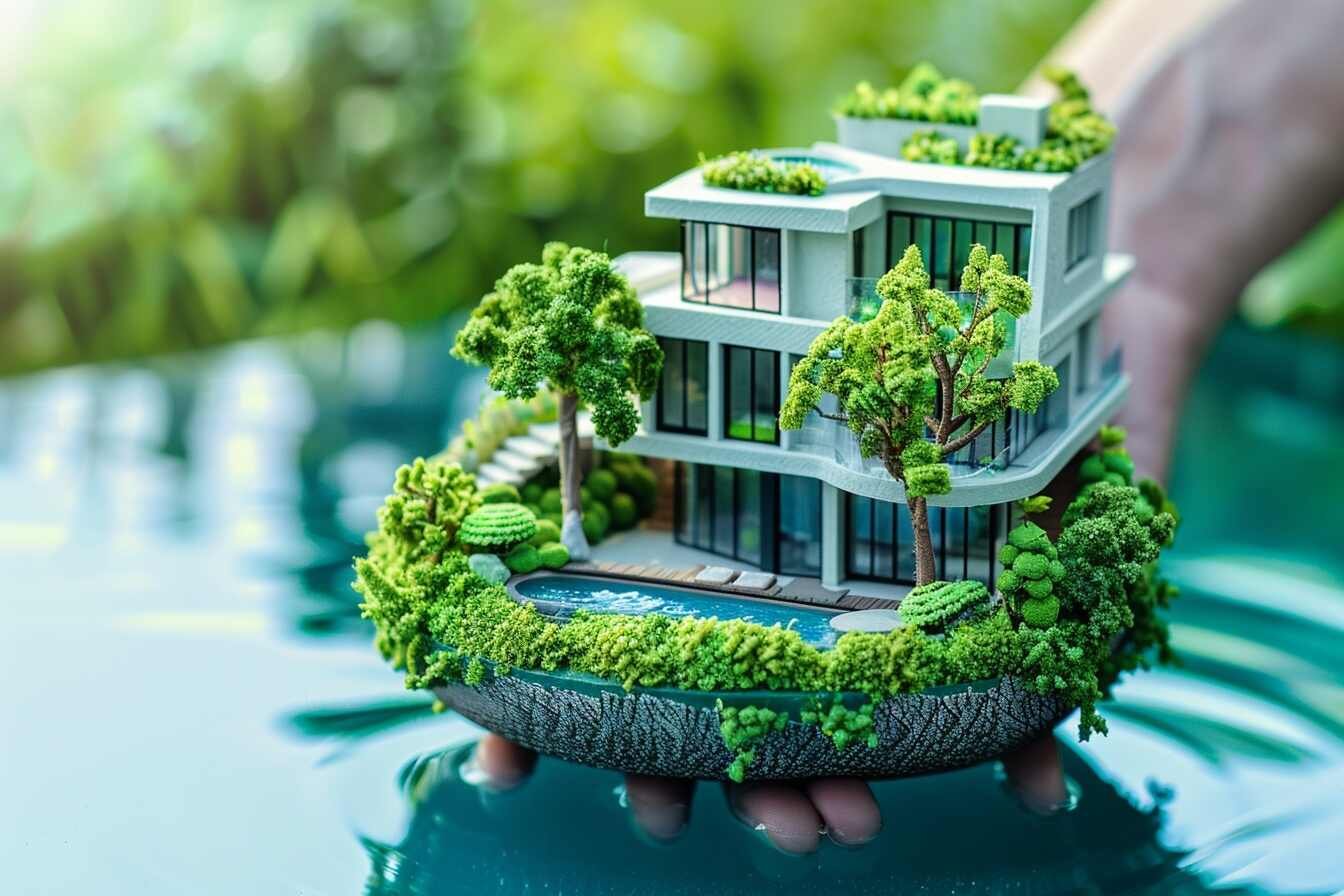Innovative Sustainable Design: How Architects Are Pioneering New Approaches to Green Building

Innovative Sustainable Design: Pioneering Approaches to Green Building
With the growing awareness of climate change and its effects on our environment, the need for sustainable design has become more pressing than ever. Innovative sustainable design is a creative and forward-thinking approach to architecture that seeks to minimize the environmental impact of buildings and promote sustainable living practices.
Architects have a crucial role to play in mitigating the impact of the built environment on the planet. By pioneering new approaches to green building, they are creating structures that are not only environmentally responsible but also aesthetically pleasing, functional, and economically viable.
In this article we will focus on the innovative ways in which architects are approaching sustainable design in the 21st century. It includes information about cutting-edge technologies and materials being used in green building, as well as examples of sustainable architecture from around the world. It highlights aldo the economic benefits of green building, including reduced energy costs and increased property values, as well as the positive impact on the environment.
Read also: Why Invest in Sustainable and EcoFriendly Properties? Where and How?
Architecture plays a crucial role in the sustainability of our planet. The construction industry contributes to a significant portion of greenhouse gas emissions and waste, and with the increasing population and urbanization, the need for sustainable design has never been more pressing. Architects are at the forefront of creating innovative approaches to green building that are not only environmentally responsible but also aesthetically pleasing and economically viable.
The Importance of Sustainable Design in Architecture
The built environment is responsible for a significant amount of greenhouse gas emissions and energy consumption. Sustainable design aims to reduce the negative impact of buildings on the environment by minimizing energy consumption, reducing waste, and using renewable resources. Architects have a responsibility to design buildings that not only meet the needs of their clients but also contribute to a sustainable future.
Examples
Innovative approaches to green building are critical for creating sustainable built environments that prioritize energy efficiency, environmental responsibility, and occupant well-being, utilizing cutting-edge technology and sustainable design principles to create buildings that are both environmentally and economically sustainable. Here are some examples of Sustainable Design in Architecture:
Bullitt Center in Seattle
The Bullitt Center in Seattle, Washington is an example of sustainable design in architecture. It is a six-story, 50,000-square-foot building that was designed to be the greenest commercial building in the world. The building uses rainwater for all its needs, has composting toilets, and generates all of its energy from rooftop solar panels. The Bullitt Center has become a model for sustainable design and has received numerous awards for its innovative approach.

Bullitt Center, Seattle, Washington. Joe Mabel, CC BY-SA 3.0, via Wikimedia Commons
Sydney Opera House
The Sydney Opera House is an excellent example of the importance of sustainable design in architecture, as its recent refurbishment project included a range of sustainable features, such as the use of recycled materials, energy-efficient lighting, and rainwater harvesting systems, highlighting the crucial role that sustainable design can play in reducing the environmental impact of even the most iconic and historic buildings.

Sydney Opera House, Australia. Diliff, CC BY-SA 3.0, via Wikimedia Commons
Innovative Approaches to Green Building
Architects are using innovative approaches to green building, such as incorporating green roofs, passive solar design, and natural ventilation systems. These techniques not only reduce energy consumption but also improve indoor air quality and create a more comfortable living environment.
Examples
Innovative approaches to green building are crucial for reducing the environmental impact of the built environment, and can encompass a wide range of sustainable design strategies and technologies, including green roofs, passive solar design, renewable energy systems, and the use of sustainable building materials. here are some examples of Innovative Approaches to Green Building:
Bosco Verticale in Milan
The Bosco Verticale in Milan is a striking example of innovative approaches to green building, featuring a vertical forest of over 900 trees, 20,000 plants on its balconies a range of sustainable features like rainwater harvesting and energy-efficient systems, demonstrating how sustainable design can be used to create high-density, eco-friendly urban spaces that prioritize environmental sustainability and human well-being.
The plants help reduce air pollution, regulate temperature, and provide a natural habitat for wildlife.
The towers have become a landmark in Milan and have won numerous awards for their innovative and sustainable design.

Bosco verticale in Milan. Panoramic photo of Library of Trees Park in Porta Nuova (Milan). Goldmund100, CC BY-SA 4.0, via Wikimedia Commons
Bullitt Center in Seattle
For example, the Bullitt Center in Seattle, Washington, is a six-story office building that is designed to be self-sufficient in energy and water. It features a green roof, solar panels, and rainwater harvesting systems.
CopenHill in Copenhagen, Denmark
The CopenHill in Copenhagen, Denmark, is a waste-to-energy plant that also functions as a ski slope, providing a unique and sustainable recreational space for the community.
CopenHill in Copenhagen, Denmark is a unique and innovative project that showcases an innovative approach to green building, as it not only serves as a waste-to-energy plant that converts waste into electricity and heat, but it also functions as a public recreational space that features a ski slope, hiking trails, and climbing walls, providing a sustainable and enjoyable outdoor experience for the community.

CopenHill in Copenhagen, Denmark. Skiing in Amager Bakke, Copenhagen. Kallerna, CC BY-SA 4.0, via Wikimedia Commons
Khoo Teck Puat Hospital in Singapore
The Khoo Teck Puat Hospital in Singapore is an excellent example of an innovative approach to green building. The hospital features green roofs, sky gardens, and open courtyards that improve indoor air quality and provide a calming and healing environment for patients. The hospital design reduces energy consumption by 35% and has won several awards for sustainability and innovation.

Khoo Teck Puat Hospital. Link bridge between Tower B and C at KTPH, Singapore. KTPH, CC BY-SA 4.0, via Wikimedia Commons
Bank of America Tower in New York City
The Bank of America Tower in New York City uses a high-performance insulating glass, an advanced air filtration system, and a water recycling system that saves millions of gallons of water each year.
This building is one of a prime examples of innovative approaches to green building, boasting a range of cutting-edge sustainable features such as a rainwater harvesting system, energy-efficient lighting, and advanced HVAC systems that help to reduce its carbon footprint and promote a more sustainable built environment.

Bank of America Tower in New York City (centre). Rhododendrites, CC BY-SA 4.0, via Wikimedia Commons
Sustainable Materials and Construction Techniques
Sustainable design also involves using materials and construction techniques that are environmentally responsible. Architects are using recycled materials, such as reclaimed wood and recycled steel, to reduce waste and lower the carbon footprint of buildings. They are also exploring new construction techniques, such as modular construction, which can significantly reduce waste and improve energy efficiency.
Examples
Sustainable materials and construction techniques are essential for reducing the environmental impact of the built environment, and can include the use of recycled or upcycled materials, low-carbon materials like timber or bamboo, and the incorporation of sustainable building practices like off-site fabrication or prefabrication to minimize waste and energy consumption during construction. Here are some examples of Sustainable Materials and Construction Techniques:
Earthship Biotecture in New Mexico
The Earthship Biotecture in New Mexico is a prime example of sustainable materials and construction techniques. It is a self-sufficient, off-grid community made of recycled materials such as tires, bottles, and cans. The building design incorporates natural ventilation and passive solar heating and cooling systems, and uses rainwater harvesting for all its water needs.

Earthship Biotecture Visitor Center in Taos, New Mexico. Reettamarjaana, CC BY-SA 4.0, via Wikimedia Commons
Bullitt Center
The Bullitt Center is an excellent example of the use of sustainable materials, including locally sourced wood and recycled steel.
Adidas flagship store in New York City
The Adidas flagship store in New York City is made from repurposed shipping containers, reducing the environmental impact of construction.
The Adidas flagship store in New York City is a testament to sustainable materials and construction techniques, featuring a range of eco-friendly materials like recycled rubber flooring and reclaimed wood accents, as well as using sustainable construction techniques such as locally-sourced materials and energy-efficient lighting to reduce its environmental impact and create a more sustainable retail environment.

Statue of Adi Dassler, sculptor Josef Tabachnyk, NYC, Flagship Store Adidas. Maxim560, CC BY-SA 4.0, via Wikimedia Commons
Exploring the Growing Interest in Sustainable and EcoFriendly Properties
Suzlon One Earth building in Pune, India
The Suzlon One Earth building in Pune, India, has achieved LEED Platinum certification and incorporates a range of sustainable features, such as rainwater harvesting and renewable energy sources.
The Suzlon One Earth building in Pune, India is a prime example of sustainable design in architecture, as it incorporates a range of sustainable materials and construction techniques, such as rainwater harvesting systems, solar panels, green roofs, and recycled materials, while also utilizing passive design strategies, such as natural ventilation and daylighting, to minimize energy consumption and promote occupant well-being, making it one of the most energy-efficient buildings in India.

Suzlon One Earth building in Pune, India. The strategy used in Suzlon One Earth Global Corporate Headquarters by Christopher Charles Benninger derives its inspiration from historical campuses like Fatehpur Sikri and the Meenakshi Temple Complex in Madurai.The concept took the shape of a land scraper, opposing the idea of skyscraper.It is a counter blast to “the glass box”. Shantanu Jukar, CC BY-SA 4.0, via Wikimedia Commons
Passive Design Strategies
Passive design strategies involve using the natural elements of the environment, such as sunlight and wind, to create comfortable indoor environments. For example, uses the sun’s energy to heat and cool buildings, reducing the need for mechanical systems. Architects are also incorporating natural ventilation systems, which use natural airflows to regulate indoor temperature and air quality.
Examples
Passive design strategies are an important element of sustainable architecture, focusing on design features that take advantage of natural light, ventilation, and climate to minimize energy consumption and enhance occupant comfort, such as natural ventilation, daylighting, shading, and thermal mass. Here are some examples of Passive Design Strategies:
Bullitt Center
The Bullitt Center uses a natural ventilation system that brings fresh air into the building and expels stale air through vents.
Manitoba Hydro Place in Winnipeg, Canada
The Manitoba Hydro Place in Winnipeg, Canada, uses a passive design strategy and features a unique open-air atrium that acts as a natural ventilation system.
Manitoba Hydro Place in Winnipeg, Canada, is a leading example of passive design strategies, featuring a unique building design that maximizes natural light and ventilation, uses geothermal heating and cooling systems, and incorporates advanced shading systems to reduce the building’s energy consumption, demonstrating how passive design strategies can be used to create high-performance, energy-efficient buildings that prioritize occupant comfort and well-being.

The LEED Platinum-certified Manitoba Hydro Building in Winnipeg, Canada, stands in the background. Interlaker, CC0, via Wikimedia Commons
Bahrain World Trade Center
The Bahrain World Trade Center is an example of a building that uses passive design strategies. The skyscraper features three wind turbines between its two towers that generate enough electricity to power over 300 homes and reduce the building’s energy consumption by 11-15%.
This building is one of a prime examples of passive design strategies, featuring a unique twin-tower design that harnesses wind power through three large turbines installed between the towers, reducing the building’s reliance on traditional energy sources and creating a more sustainable and energy-efficient commercial space.

Bahrain World Trade Center. B.alotaby, CC BY-SA 4.0, via Wikimedia Commons
Arizona State University Biodesign Institute in Tempe, Arizona
The Arizona State University Biodesign Institute in Tempe, Arizona, features a passive cooling system that uses chilled water to cool the building without the use of air conditioning.
It features such as natural ventilation, daylighting, and an advanced shading system that helps to reduce the building’s energy consumption and create a more sustainable research facility, showcasing how passive design strategies can be used in a variety of building types and applications.

Arizona State University Biodesign Institute in Tempe, Arizona. davidpinter, CC BY 3.0, via Wikimedia Commons
Why Invest in Sustainable and EcoFriendly Properties? Where and How?
The Future of Sustainable Design
As the demand for sustainable design grows, architects are pushing the boundaries of what is possible. They are exploring new materials, such as bioplastics and nanomaterials, and new construction techniques, such as 3D printing. They are also using data analytics and artificial intelligence to optimize building performance and reduce energy consumption. For example, the Edge in Amsterdam, Netherlands, is a smart building that uses sensors to adjust lighting, heating, and cooling based on the occupancy and weather conditions.
Examples
The future of sustainable design is rapidly evolving, driven by emerging technologies, shifting social attitudes towards environmental responsibility, and a growing awareness of the need for sustainable solutions to address global challenges like climate change, and is likely to encompass a range of innovative and creative approaches to sustainable design that prioritize environmental responsibility, energy efficiency, and occupant well-being. Here are some example and ideas that you can do for The Future of Sustainable Design:
EDGE Olympic in Amsterdam
The EDGE Olympic in Amsterdam, Netherlands, is a smart building that uses sensors to adjust lighting, heating, and cooling based on occupancy and weather conditions. In addition, architects are exploring new materials, such as bioplastics and nanomaterials, and new construction techniques, such as 3D printing.

EDGE Olympic in Amsterdam. Ntro120, CC BY-SA 4.0, via Wikimedia Commons
Bullitt Center
The Bullitt Center also demonstrates the future of sustainable design. It features an innovative water treatment system that recycles 100% of the building’s sewage, reducing the use of potable water by 80%. Architects are also exploring new materials such as bioplastics and nanomaterials.
The Bullitt Center, as a pioneering example of sustainable design, represents a significant step towards a more sustainable future, showcasing how innovative sustainable design and technology can be combined to create high-performance buildings that minimize environmental impact and promote a more sustainable built environment.

Seattle – Bullitt Center. Joe Mabel, CC BY-SA 3.0, via Wikimedia Commons
Eastgate Centre in Harare, Zimbabwe
The Eastgate Centre in Harare, Zimbabwe, is a building that uses passive cooling techniques inspired by termite mounds to maintain a comfortable indoor temperature without the use of air conditioning.

Eastgate Centre, Harare, Zimbabwe (foreground, the building with the large number of chimneys on top). David Brazier, CC BY-SA 3.0, via Wikimedia Commons
Conclusion
Sustainable design in architecture is crucial for reducing the negative impact of buildings on the environment and improving human well-being. Innovative approaches to green building, sustainable materials and construction techniques, passive design strategies, and the use of data analytics and artificial intelligence are paving the way for a greener future. Architects have a significant role to play in creating sustainable buildings that prioritize environmental and community well-being. As we move forward, sustainable design should remain a primary focus in the architecture industry.
Photo credit (main picture): anncapictures via Pixabay
Investing in International Real Estate: Tips and Strategies for Success





